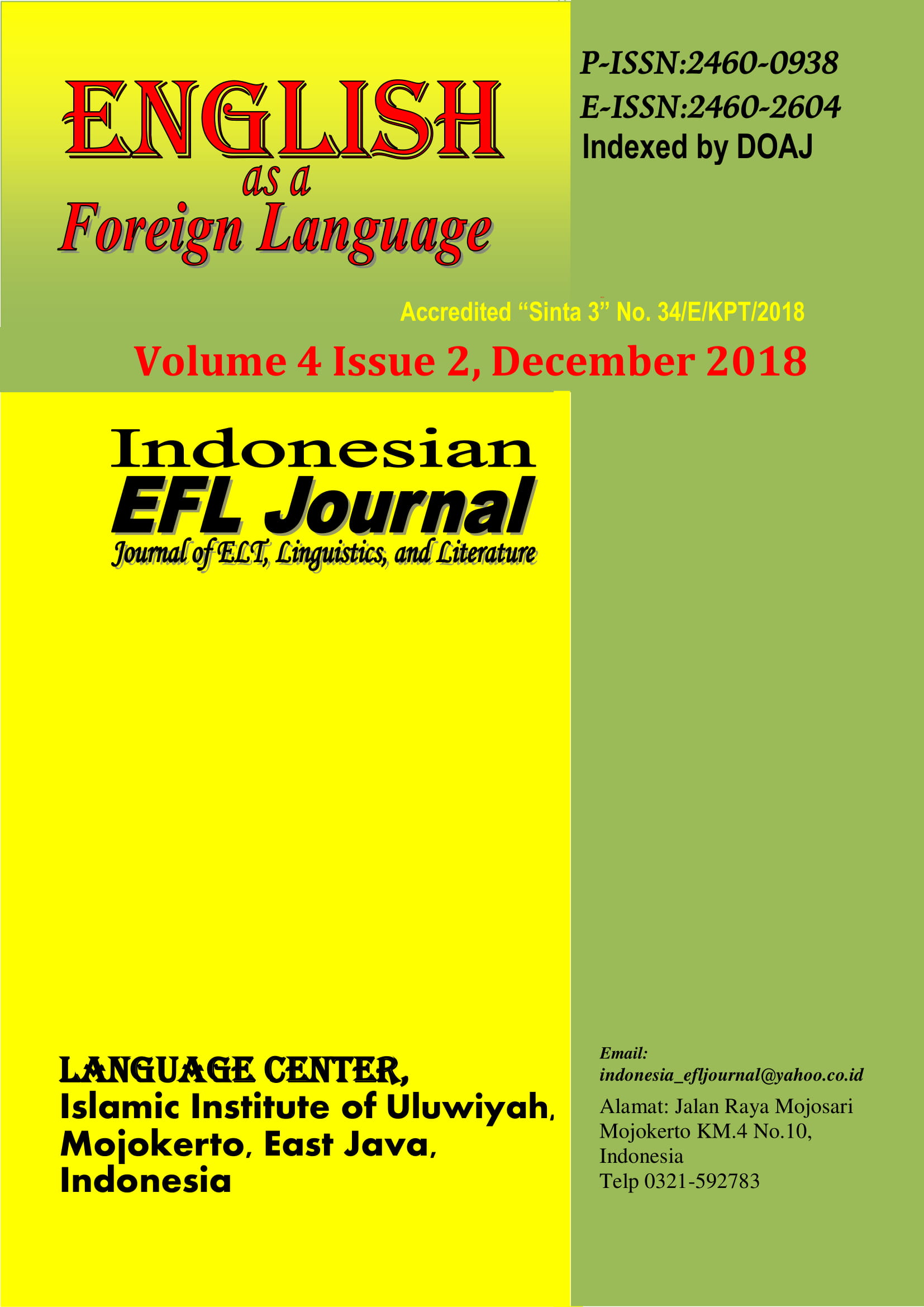Qualitative Research in English Language Teaching and Learning
Abstract
This paper presents the theoretical framework and features of qualitative research, as well as its approaches, data collection and data analysis, advantages and disadvantages. The statistics show that qualitative research method has dramatically risen in popularity over the last fifteen years. It includes discussion on the contribution of qualitative research in terms of both its popularity and suitability to the field of English language teaching and learning. The specifics for how qualitative research is implemented in the field of language learning and teaching will be specifically explored. Two articles will be reviewed in terms of their application of qualitative research method. This will be done in order to provide insights for literature reviews conducting qualitative studies in the research relevant to the interests of this essay.This research enriches the literature of qualitative research in the field of English language teaching and learning.
References
Berg, B. L., & Lune, H. (2014). Qualitative Research Methods for the Social Sciences: Bruce L. Berg; Howard Lune. Pearson Education Limited.
Bourdieu, P. (1990). The Logic of Practice. Stanford University Press.
Brown, J. D. (1988). Understanding Research in Second Language Learning: A Teacher's Guide to Statistics and Research Design. Cambridge University Press.
Brownlee, J. M., Walker, S., & Mascadri, J. (2015). Personal Epistemologies and Teaching. International Handbook of Research on Teachers’ Beliefs, 319-335.
Bryman, A. (2012). Social Research Methods. Oxford University Press.
Bryman, A., & Burgess, R. G. (1994). Reflections on Qualitative Data Analysis. Analyzing Qualitative Data, 216-226.
Burns, A. (2010). Doing Action Research in English Language Teaching: A Guide for Practitioners. Routledge.
Chapelle, C. A., & Duff, P. A. (2003). Some Guidelines for Conducting Quantitative and Qualitative Research in TESOL. TESOL Quarterly, 37(1), 157-178.
Cohen, L., Manion, L., & Morrison, K. (2000). Research Methods in Education [5th edn] London: Routledge.
Creswell, J. W. (2002). Educational Research: Planning, Conducting, and Evaluating Quantitative. Prentice Hall.
Dörnyei, Z. (2007). Research Methods in Applied Linguistics: Quantitative, Qualitative, and Mixed Methodologies. Oxford: Oxford University Press.
Ellis, R. (1990). Researching Classroom Language Learning. Research in the Language Classroom. Modern English Publications.
Fives, H., & Buehl, M. M. (2008). What do Teachers Believe? Developing a Framework for Examining Beliefs about Teachers’ Knowledge and Ability. Contemporary Educational Psychology, 33(2), 134-176.
Gibbs, G. (2002). Qualitative Data Analysis: Explorations with NVivo (Understanding Social Research). Buckingham: Open University Press.
Glaser, B. S., & Strauss, A. A. (1967), The Discovery of Grounded Theory. New York.
Gorard, S. (2001). Quantitative Methods in Educational Research: The Role of Numbers Made Easy. Bloomsbury Publishing.
Goodson, I. (1994). Studying the Teacher's Life and Work. Teaching and Teacher Education, 10(1), 29-37.
Heigham, J., & Croker, R. A. (Eds.). (2009). Qualitative Research in Applied Linguistics: A Practical Introduction. Palgrave Macmillan.
Hyland, F. (2000). ESL Writers and Feedback: Giving more Autonomy to Students. Language Teaching Research, 4(1), 33-54.
Hughes, Joanne (2015) Lecture Course Handouts, EDD 9030 Qualitative Research: Methods, Data and Theory. Belfast, the UK: Queen’s University of Belfast.
Jenkins, R. (1995). Social Skills, Social Research Skills, Sociological Skills: Teaching Reflexivity?. Teaching Sociology, 16-27.
Lazaraton, A. (2000). Current trends in Research Methodology and Statistics in Applied Linguistics. Tesol Quarterly, 34(1), 175-181.
Matthew B. Miles, & A. Michael Huberman. (1994). Qualitative Data Analysis: An Expanded Sourcebook. Sage.
Merriam, S. B. (2002). Qualitative Research in Practice: Examples for Discussion and Analysis. Jossey-Bass Inc Pub.
Nunan, D. (1992). Research Methods in Language Learning. Cambridge University Press.
Nunan, D., & Carter, R. (Eds.). (2001). The Cambridge Guide to Teaching English to Speakers of Other Languages. Cambridge: Cambridge University Press.
O’Boyle, A. (2010). Interpersonal Aspects of Thinking Skills in an Intercultural Language Learning Context. Language Society and Culture, 31, 62-71.
Paulus, T. M. (1999). The Effect of Peer and Teacher Feedback on Student Writing. Journal of Second Language Writing, 8(3), 265-289.
Rahman, M. S. (2015). The Contribution Made by Qualitative Research to TESOL. International Journal of English Language Teaching. 3(2), 1-14.
Ramanathan, V., & Atkinson, D. (1999). Ethnographic Approaches and Methods in L2 Writing Research: A Critical Guide and Review. Applied Linguistics, 20(1), 44-70.
Richards, K. (2003). Qualitative inquiry in TESOL. Basingstoke: Palgrave Macmillan.
Shi, X. (2013). The Globalization of English: A Chinese Case Study. Journal of Developing Societies, 29(2), 89-122.
Strauss, A., & Corbin, J. M. (1990). Basics of qualitative research: Grounded theory procedures and techniques. Sage Publications, Inc.
Weigle, S. C., & Nelson, G. L. (2004). Novice Tutors and Their ESL Tutees: Three case Studies of Tutor Roles and Perceptions of Tutorial Success. Journal of Second Language Writing, 13(3), 203-225.
Weitzman, E., & Miles, M. B. (1995). Computer Programs for Qualitative Data Analysis: A Software Sourcebook. Sage Publications.
Yin, R. K. (2013). Case Study Research: Design and Methods. Sage publications.
Copyright (c) 2018 Indonesian EFL Journal: Journal of ELT, Linguistics, and Literature

This work is licensed under a Creative Commons Attribution-ShareAlike 4.0 International License.
All rights reserved.
this publication may be reproduced, stored in a retrieval system, or transmitted
in any form or by any means, electronic, mechanical, photocopying, recording.




